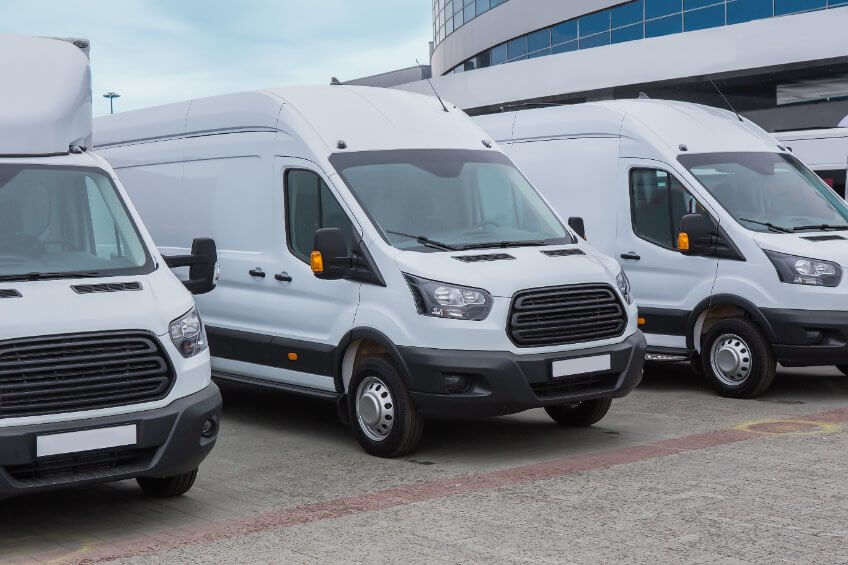
9 Best Fleet Management Tips for Businesses + Telematics Guide
The success of your business is anchored on your vehicles and their drivers performing at their best. However, maintaining a respectable level of performance from your fleet, especially for businesses that use multiple vehicles, is more tedious than it looks. So it’s always a good idea to develop a risk management approach that will help minimize, if not prevent, insurance risks.
In this article, we aim to provide actionable fleet management tips to help you avoid property damage, potential injuries, and liability losses.
But First, a Reminder for Fleet Managers:
Fleet management must take into consideration two distinct risk categories:
- The Driver
- The Vehicle
Preventing unwanted incidents entails the maintenance and management of both entities. For this reason, our fleet management tips will cover each risk, and we’ll touch on the best practices when implementing a telematics program for your fleet as well.
To learn more about our insurance coverage terms and liability, feel free to contact Northeast- MetroWest Insurance Agency to directly talk with a specialized Insurance Representative.
Best Fleet Management Tips for Businesses
Here are the best practices brought to you by Northeast-MetroWest Insurance Agency to help you manage your fleet:
Driver Risk Management
- Develop a comprehensive fleet safety program
Fleet safety programs outline the policies and procedures to ensure a safe work environment for employees and protect against liability from potential vehicular accidents. These documents must contain the following:
- Screening process for drivers
- Driver training, supervision, and management policies
- Vehicle inspection and maintenance
- Accident reporting, investigation, and analysis
- Provide training programs for drivers
Driver training programs make motorists better, safer, and more competent. This ensures the safety of your employees and pedestrians, along with reduced motoring costs thanks to better maintenance of the vehicles.
Good training programs teach defensive driving and discuss various accident types to reduce the likelihood of road accidents taking place.
- Plan trips based on load and truck size
The less time drivers spend on the road, the less likely accidents may occur. With route planning, you may consolidate deliveries by destination so your fleet covers more ground in one trip.
Establishing advanced navigation systems may also help drivers effectively maneuver large trucks through different terrain. This will also guide drivers to make necessary detours in case of road closures, ensuring they arrive safely and efficiently.
- Maintain communication and set incentives
Always keep your drivers updated about driving conditions and other in-company concerns to let them know they belong. Setting up incentive programs to reward good drivers can motivate them to maintain top-notch performance.
Note: One way to assess performance is through telematics, which we’ll explain in a jiffy!
- Conduct regular MVR assessments for drivers
Even if drivers made it through the initial screening, there’s no guarantee that vehicle accidents won’t occur. That’s why regular Motor Vehicle Record (MVR) assessments put this fact into consideration.
An MVR is a file that explains a person’s driving history. This includes any DUI, traffic citations, vehicular crimes and accidents, and how many points a driver has on his license.
MVR checks certify that you maintain the best drivers, keeping you and your fleet safe.
Vehicle Risk Management
- Review SMS report (for DOT-registered vehicles)
The Safety Measurement System is updated monthly to demonstrate and score motor carriers’ performance in relation to their peers using data from roadside inspections, crash reports, and prior investigations.
- Implement a pre-trip inspection
Take preventative measures with pre-trip inspections to nip accidents before they even happen.
- Train workers in proper load securement
Ensuring each carrier’s contents are intact prevents inventory damage and protects motorists and pedestrians from accidents.
- Conduct vehicle maintenance
Your drivers are only as good as the vehicles they use. Regular maintenance helps diminish the likelihood of accidents. Instruct your drivers to also report any problems immediately.
A Simple Guide to Set-up a Telematics Program
Telematics is an insurance risk cost-saving option you can try out. The main concept of telematics programs is to help you secure a discount on your car insurance if you drive safer than the average driver or if you drive fewer distances than average, per year. In this context, your telematics will cover your fleet’s driving.
Here are simple steps to set up a telematics program:
- Partner with reputable vendors — to ensure high-quality service and accurate data measurement (examples: LoJack, Driver’s Alert, Intellicorp, and KeepTruckin)
- Set realistic and attainable goals — like 5 percent lower mileage or 5 percent reduction in fuel consumption
- Involve and reward good-performing drivers — to keep their morale high and encourage better performance
- Update fleet safety program — your company policies must reflect the integration of telematics
- Always review telematics data — these insights will help you make the necessary adjustments to improve fleet management
If you manage a fleet for your business, reach out to talk to Northeast-MetroWest Insurance Agency’s commercial business representatives. Learn more about your insurance options by clicking here!

 Previous Post
Previous Post Next Post
Next Post